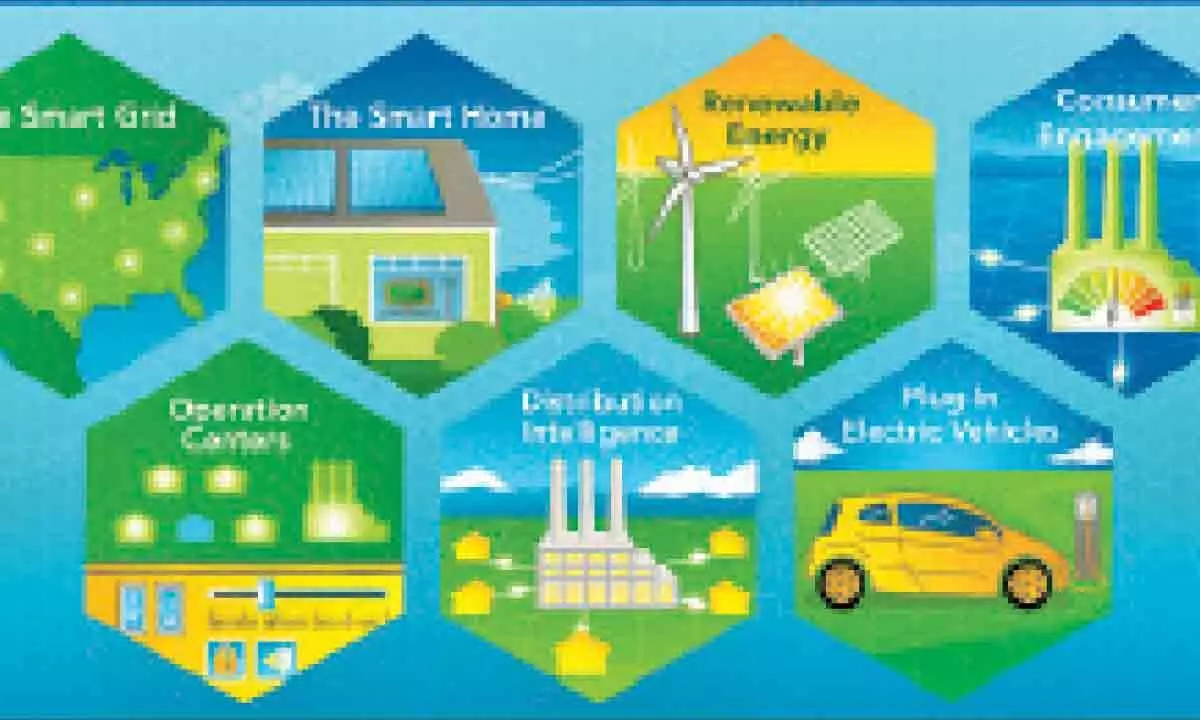Play smart. Be part of the age of smart energy

The rising adoption of smart grid technologies is notably driving the smart energy market
The global smart energy market size reached $ 151.7 billion in 2022. Looking forward, IMARC Group expects the market to reach $ 253.0 billion by 2028, exhibiting a growth rate (CAGR) of 8.3% during 2023-2028.
The smart energy market size is expected to grow by $ 7.26 billion from 2023 to 2028. In addition, the growth momentum of the market will progress at a CAGR of 19.1% during the forecast period, according to Technavio.
The rising adoption of smart grid technologies is notably driving the smart energy market. However, factors such as intermittency in solar energy may impede market growth. The market is segmented by application (smart grid, digital oilfield, smart solar systems, and HEMS), end-user (industrial, commercial, and residential), and geography (North America, Europe, APAC, South America, and Middle East and Africa).
Smart energy refers to a sustainable energy management solution that utilizes energy-efficient, renewable and the Internet of Things (IoT)-integrated systems and devices. It involves smart electricity, gas, solar and thermal grids and home energy management systems that use distributed generation systems, meters and modules for one-way or two-way communications. These solutions are used for collecting and storing data that are further transmitted to computers, laptops, smart phones and power line carriers.
Smart energy systems enable the consumers to monitor and vary their energy demands and reduce emission rates. They also aid in reducing aggregate transmission and commercial energy losses while preventing disconnection, eliminating inefficiencies in billing and minimizing re-connection costs. As a result, smart energy is widely used for residential purpose.
The increasing deployment of smart grid technologies is one of the key factors driving the growth of the market. Moreover, the rising demand for efficient energy solutions is providing a thrust to the market growth. Smart energy solutions provide accurate readings regarding the energy consumption to the users and can aid in remote monitoring of sub-meters to prevent power outages. In line with this, the widespread adoption of advanced metering solutions, instrumentation, network infrastructure and network management software, especially in the developing economies, is also contributing to the growth of the market.
These solutions are integrated with workforce and mobile management systems and distribution automation solutions for enhanced operational efficiency. Additionally, the increasing focus on rural electrification and the rising utilization of smart meters for automatic control of electricity, light and energy to minimize wastage are also favoring the market growth.
Other factors, including the implementation of favorable government policies to promote the utilization of renewable energy resources, along with extensive infrastructural development, are likely to drive the market toward growth.
Last year, the energy sector was dominated by many advances, like the drive for decentralisation, the increasing use of Web3 and AI technologies and the focus on the grid as the foundation or ‘backbone’ of the renewables-driven grid of the future and we expect these to continue into 2024.
Decentralization refers to the emergence of geographically dispersed electricity production, involving numerous producers and consumers across various levels. Some regions are now independently generating electricity, even without being tethered to established distribution networks. This trend fosters lower energy consumption and opens doors for the widespread adoption of renewable energy sources.
Historically, electric power systems have relied on a centralized architecture, presenting unique challenges for the industry. However, the Internet of Energy (IoE) emerges as a solution to many of these hurdles, offering enhanced efficiency and optimal design for energy systems within buildings. IoE introduces intelligent distributed control mechanisms that facilitate energy transactions among users.
This transformative approach to energy generation represents a shift towards a smart grid, fostering improved coordination and optimization across the broader energy system. By enabling intelligent, decentralized control, IoE revolutionizes how energy is managed, enhancing the efficiency and coordination of energy transactions within the larger energy ecosystem.

















